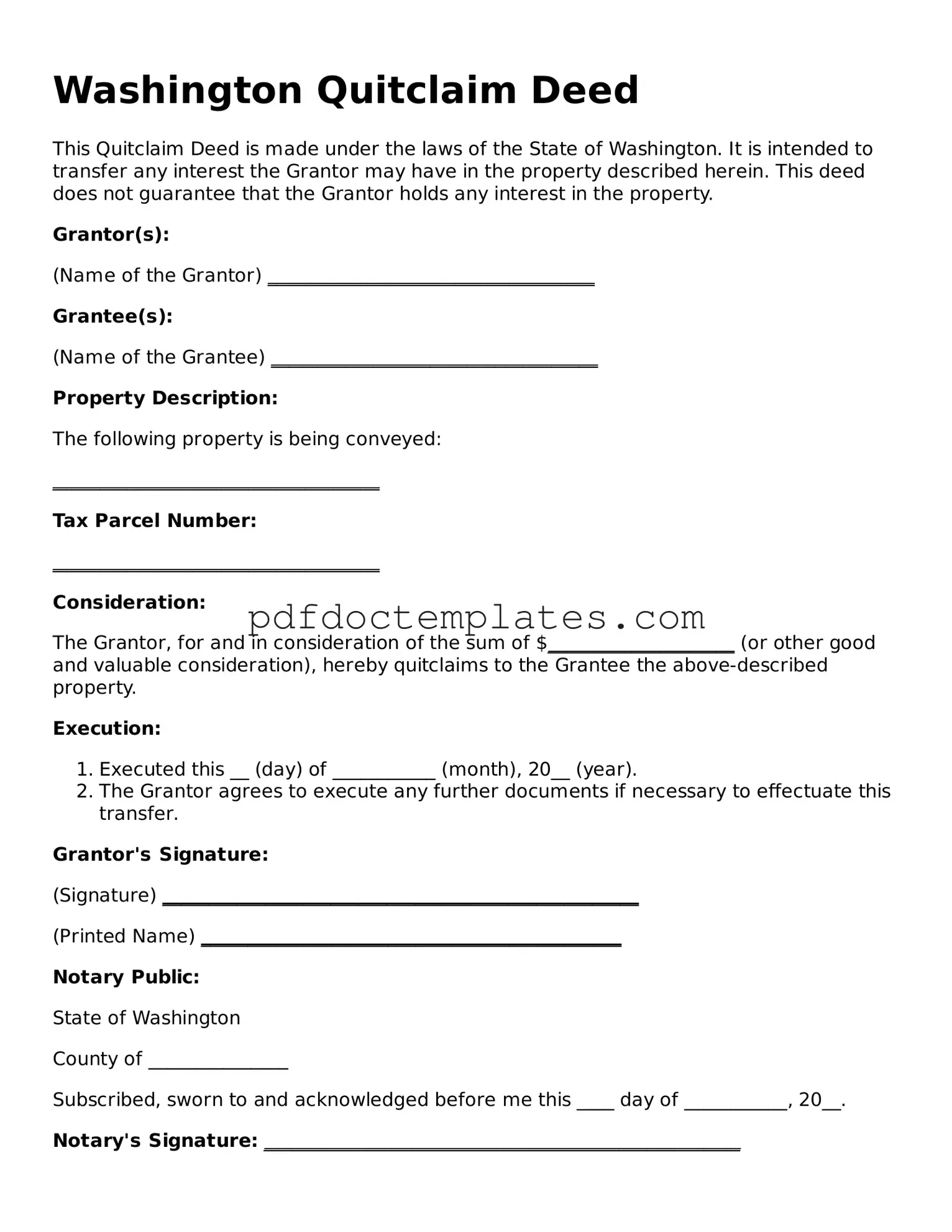Washington Quitclaim Deed
This Quitclaim Deed is made under the laws of the State of Washington. It is intended to transfer any interest the Grantor may have in the property described herein. This deed does not guarantee that the Grantor holds any interest in the property.
Grantor(s):
(Name of the Grantor) ___________________________________
Grantee(s):
(Name of the Grantee) ___________________________________
Property Description:
The following property is being conveyed:
___________________________________
Tax Parcel Number:
___________________________________
Consideration:
The Grantor, for and in consideration of the sum of $____________________ (or other good and valuable consideration), hereby quitclaims to the Grantee the above-described property.
Execution:
- Executed this __ (day) of ___________ (month), 20__ (year).
- The Grantor agrees to execute any further documents if necessary to effectuate this transfer.
Grantor's Signature:
(Signature) ___________________________________________________
(Printed Name) _____________________________________________
Notary Public:
State of Washington
County of _______________
Subscribed, sworn to and acknowledged before me this ____ day of ___________, 20__.
Notary's Signature: ___________________________________________________
My Commission Expires: ___________________________________________________
This form should be filed with the county auditor in the county where the property is located.
